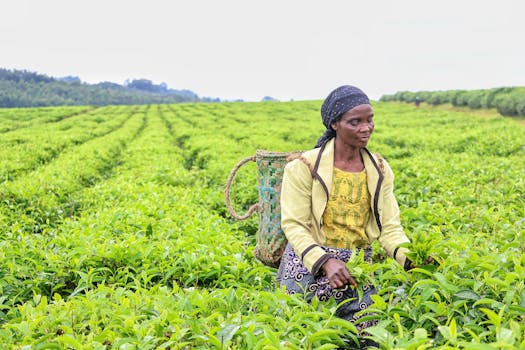Empowering Communities: The Role of Women in Africa’s Fiber Production

Empowering Communities: The Role of Women in Africa’s Fiber Production
Introduction
Empowering Communities: The Role of Women in Africa’s Fiber Production. The fiber production industry is a significant contributor to Africa’s economy, and women play a vital role in this sector. From cultivating and harvesting fiber crops to processing and manufacturing fiber products, women’s participation is crucial for the industry’s success. This article will explore the importance of women’s participation in the fiber industry and its impact on African communities.
The fiber production industry in Africa is diverse and includes the production of cotton, flax, hemp, and other fiber crops. Women are involved in various stages of the production process, including planting, harvesting, and processing. In addition to their technical skills, women also bring unique perspectives and approaches to the industry, which can lead to innovative solutions and new market opportunities.
The Impact of Women’s Participation on Community Development
Women’s participation in the fiber production industry has a significant impact on community development. By engaging in fiber production, women can generate income, improve their livelihoods, and contribute to the local economy. This, in turn, can lead to improved living standards, better healthcare, and increased access to education for themselves and their families.
Furthermore, women’s participation in the fiber industry can also promote social change and empower women to take on leadership roles. As women become more involved in the industry, they can challenge traditional gender norms and stereotypes, and advocate for policies and practices that support their participation. This can lead to a more inclusive and equitable industry, where women have equal access to resources, markets, and decision-making opportunities.
Challenges and Opportunities
Despite the importance of women’s participation in the fiber industry, there are several challenges that need to be addressed. One of the main challenges is the lack of access to resources, such as land, credit, and technology. Women often face difficulties in accessing these resources, which can limit their ability to participate in the industry and earn a decent income.
Another challenge is the limited availability of training and capacity-building programs for women in the fiber industry. Women may lack the technical skills and knowledge needed to participate in the industry, which can make it difficult for them to compete with men. Additionally, women may face social and cultural barriers, such as limited mobility and lack of decision-making power, which can restrict their participation in the industry.
However, there are also opportunities for women’s participation in the fiber industry to be increased. Governments, NGOs, and private sector organizations can provide training and capacity-building programs for women, as well as access to resources such as land, credit, and technology. Additionally, policies and practices can be implemented to support women’s participation, such as affirmative action policies and quotas for women’s representation in decision-making positions.
Conclusion
In conclusion, the role of women in Africa’s fiber production is crucial for community development and economic growth. Women’s participation in the industry can generate income, improve livelihoods, and promote social change. However, there are also challenges that need to be addressed, such as limited access to resources and training. By providing training and capacity-building programs, as well as access to resources, governments, NGOs, and private sector organizations can support women’s participation in the fiber industry and promote a more inclusive and equitable industry.




